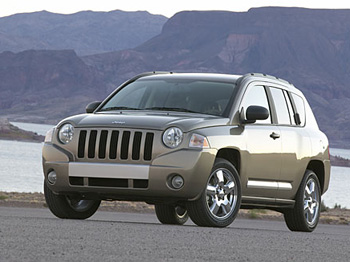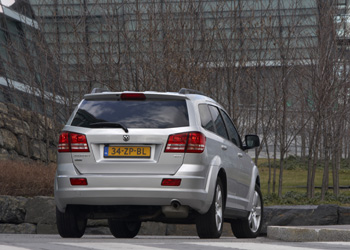
 |
|
Chrysler failed to capitalise on the rush to
the showrooms that came with the U.S.
Transport Department's Car Allowance Rebate
Scheme, more commonly known as Cash for
Clunkers, that saw 690,114 older and
more polluting cars traded in. |
|
|
|
The
U.S. Transport Department's CARS [Car Allowance
Rebate Scheme] programme more commonly known as
Cash for Clunkers came to a close Tuesday
night with nearly 700,000 older cars being taken
off the roads and replaced by far more fuel
efficient vehicles. Rebate applications worth
US$2.877 billion were submitted by the 8 p.m.
deadline, under the US$3 billion provided by
Congress to run the program.
However Fiat's new alliance partner Chrysler was the biggest
loser in this sales bonanza despite highly competitive
pricing designed to lure buyers into the showrooms as
consumers shunned offerings from the Chrysler, Dodge and
Jeep brands. Of the 690,114 new vehicles that were purchased
during the scheme just a meagre 6.6 percent came from
Chrysler's brands. Toyota claimed the biggest share of sales
with 19.4 percent of all cars sold under the scheme,
followed by General Motors (17.6 percent) and Ford (14.4
percent). Also outdoing Chrysler's efforts were Honda (13.0
percent), Nissan (8.7 percent) and Hyundai (7.2 percent).
Cars
made in America topped the most-purchased list, from the
Ford Focus to the Toyota Corolla to the Honda Civic and the
U.S. government expressed itself highly satisfied with the
outcome. "American consumers and workers were the clear
winners thanks to the cash for clunkers program," said U.S.
Transportation Secretary Ray LaHood. "Manufacturing plants
have added shifts and recalled workers. Moribund showrooms
were brought back to life and consumers bought fuel
efficient cars that will save them money and improve the
environment." "This is one of the best economic news stories
we’ve seen and I’m proud we were able to give consumers a
helping hand," Secretary LaHood added.
Toyota's Corolla was the most popular car to be bought by
customers through the incentive scheme with its Camry coming
in third, while Chrysler failed to get any of its models
into the top-10. In between the two Toyota models was
Honda's Civic, while the fourth placed Ford Focus FWD was
the first offering from Detroit's "Big 3". The rest of the
top ten was made up of the Hyundai Elantra, Nissan Versa,
Toyota Prius, Honda Accord, Honda Fit and the Ford Escape
FWD. Ford and General Motors both recently announced
production increases for both the third and fourth quarters
as a result of the demand generated by the program. Honda
also said it will be increasing production at its U.S.
plants in East Liberty and Marysville, Ohio and in Lincoln,
Alabama.
In
addition, the program provides good news for the
environment. That’s because 84 percent of consumers traded
in trucks and 59 percent purchased passenger cars. The
average fuel economy of the vehicles traded in was 15.8
miles per gallon and the average fuel economy of vehicles
purchased is 24.9 mpg. – a 58 percent improvement. "This is
a win for the economy, a win for the environment and a win
for American consumers," Secretary LaHood said. With the end
of transactions under the program, the Department of
Transportation is augmenting a team that already includes
more than 2,000 people processing dealer applications for
rebates.
84
percent of trade-ins under the program are trucks and 59
percent of new vehicles purchased are cars.
The
program worked far better than anyone in the Treasury
Department anticipated at moving consumers out of old, dirty
trucks and SUVs and into new more fuel-efficient cars.
Cars purchased under the program are, on average, 19 percent
above the average fuel economy of all new cars currently
available, and 59 percent above the average fuel economy of
cars that were traded in. This means the program raised the
average fuel economy of the fleet, while getting the
dirtiest and most polluting vehicles off the road.
|